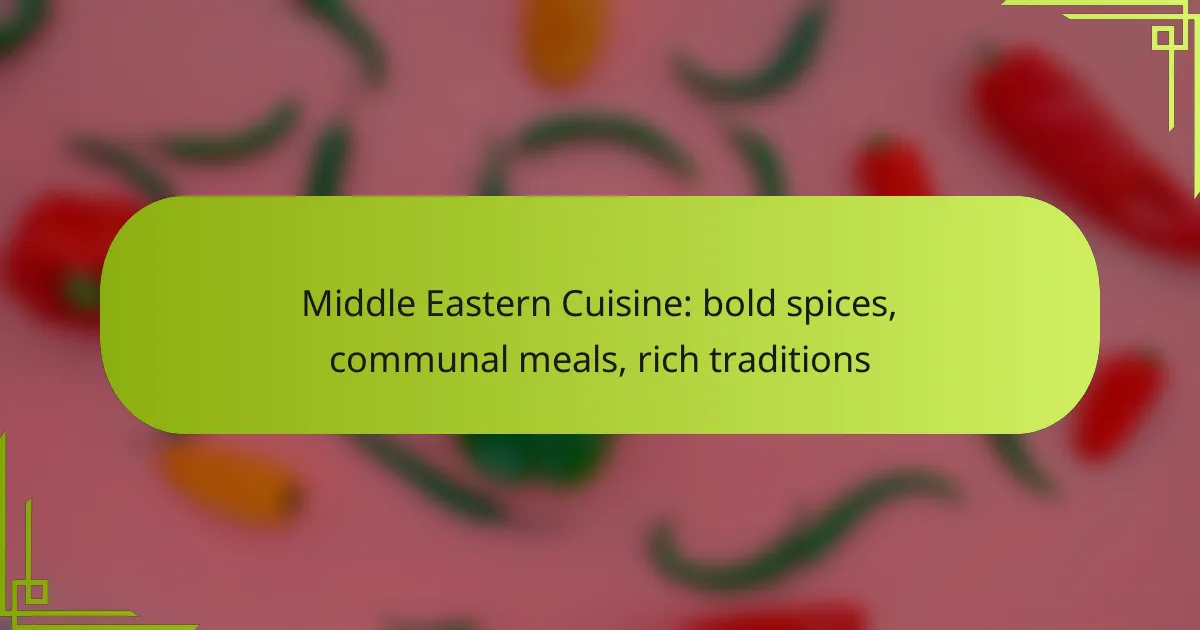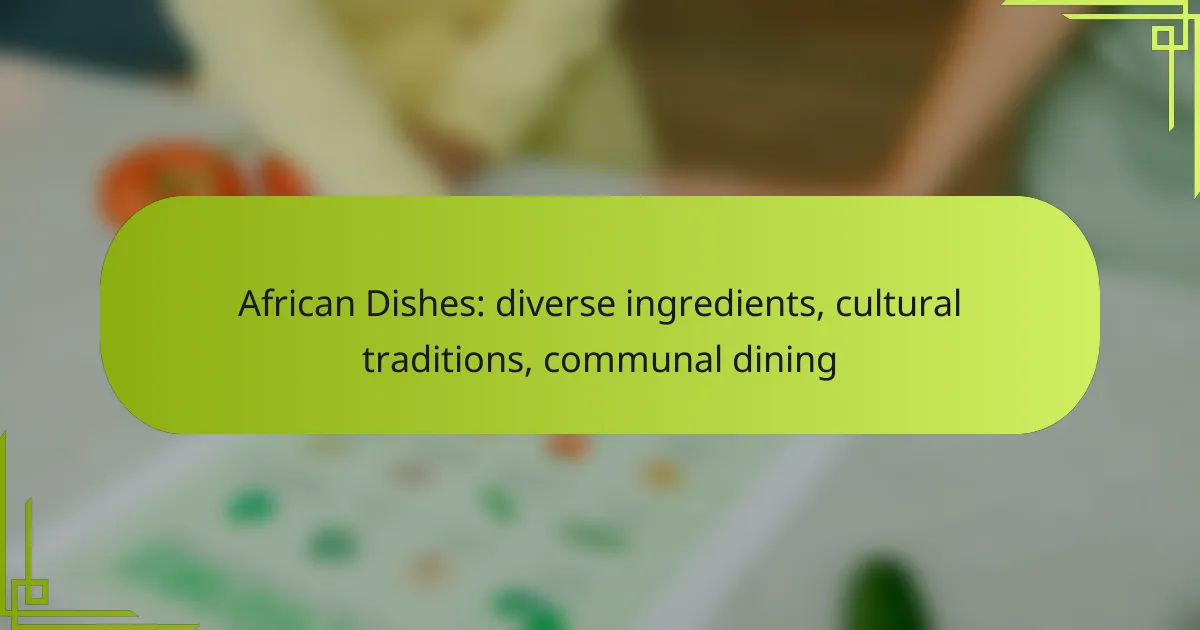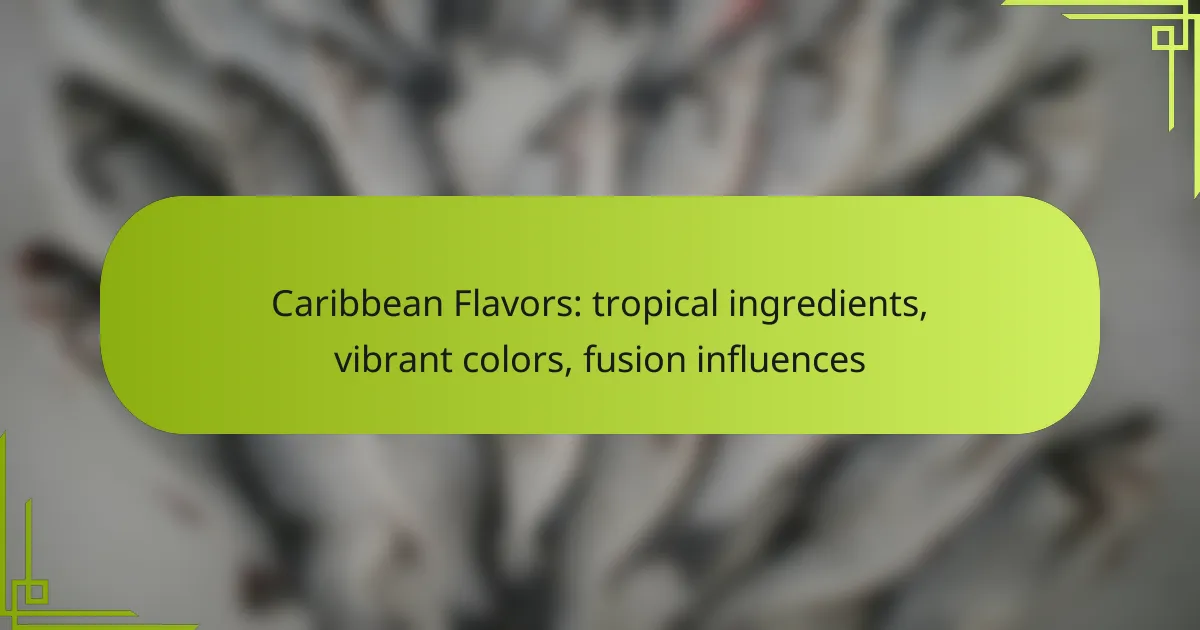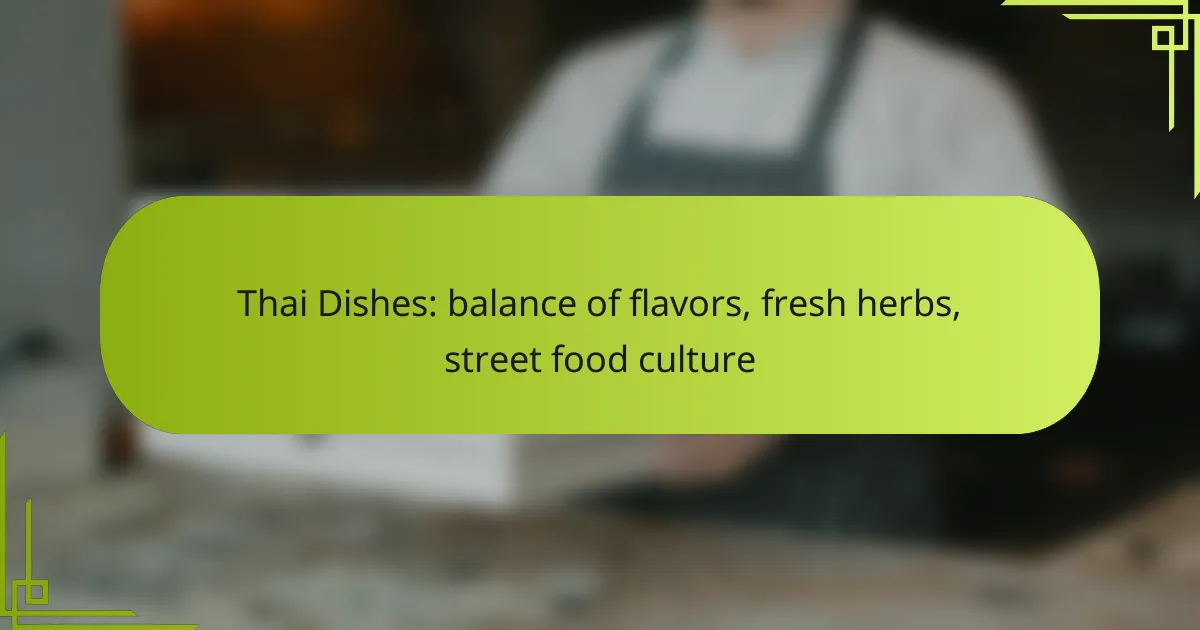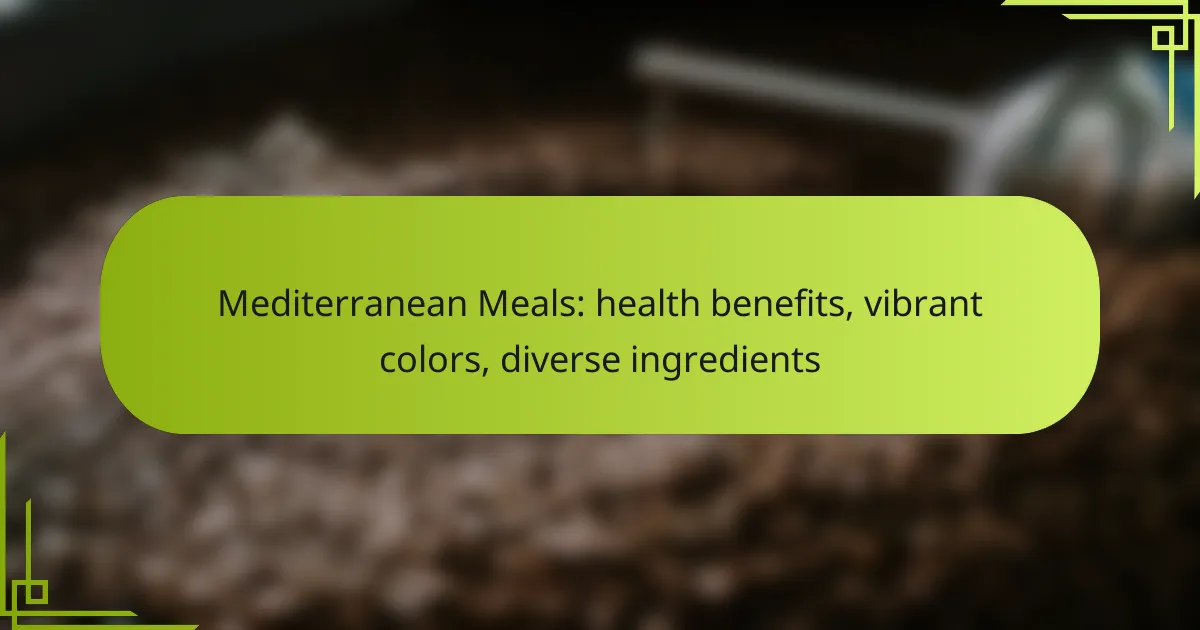Middle Eastern cuisine is a vibrant tapestry of bold spices and rich traditions, offering a delightful array of dishes that reflect the region’s diverse cultural heritage. Central to this culinary experience are communal meals, which foster connections and celebrate hospitality, making dining a cherished social activity. From hummus to shawarma, each dish tells a story of flavor and history, inviting everyone to partake in the joy of shared food.
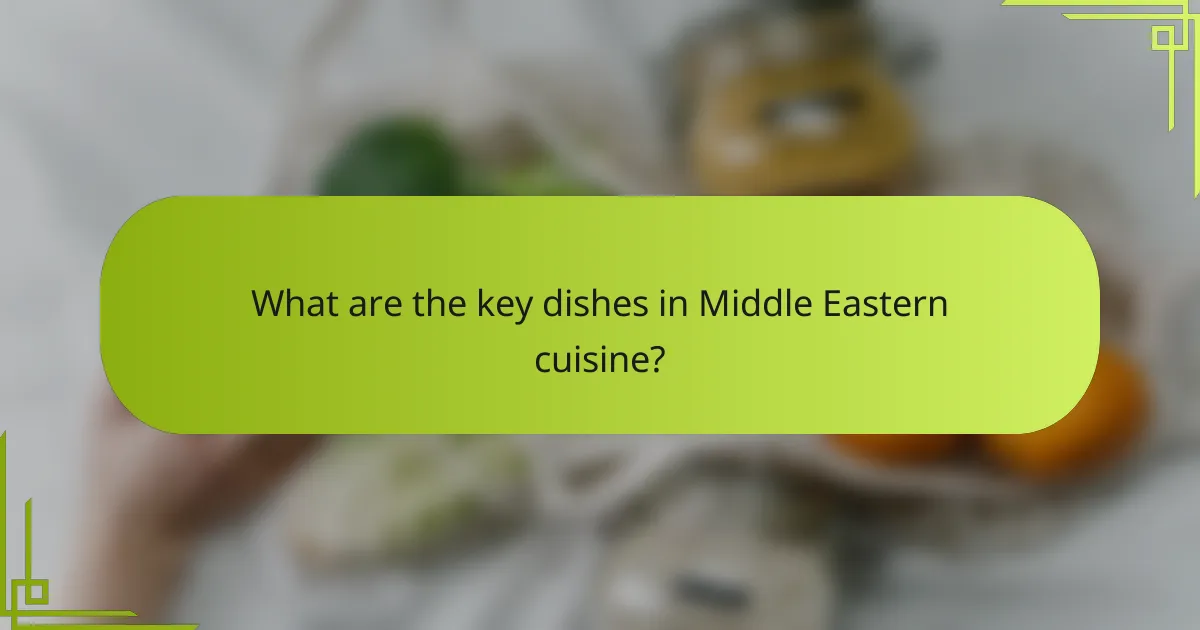
What are the key dishes in Middle Eastern cuisine?
Middle Eastern cuisine is characterized by a variety of bold flavors and communal dining experiences, featuring key dishes that highlight rich traditions and diverse ingredients. Some of the most popular dishes include hummus, shawarma, kebabs, tabbouleh, and baba ghanoush, each offering a unique taste of the region’s culinary heritage.
Hummus
Hummus is a creamy dip made primarily from blended chickpeas, tahini, lemon juice, and garlic. It is often served as an appetizer and is a staple in many Middle Eastern meals, enjoyed with pita bread or fresh vegetables.
When preparing hummus, the quality of the ingredients is crucial. Using fresh lemon juice and high-quality tahini can significantly enhance the flavor. For a twist, consider adding roasted red peppers or spices like cumin.
Shawarma
Shawarma is a popular street food consisting of marinated meat, typically lamb, chicken, or beef, that is slow-cooked on a vertical rotisserie. It is sliced thin and often served in a wrap or pita with vegetables and sauces.
For the best shawarma, marinate the meat for several hours or overnight to allow the spices to penetrate. Common toppings include garlic sauce, tahini, pickles, and fresh vegetables, creating a flavorful and satisfying meal.
Kebabs
Kebabs are skewered and grilled pieces of meat, often seasoned with a blend of spices. They can be made from various meats, including lamb, beef, or chicken, and are typically served with rice or flatbreads.
When grilling kebabs, ensure even cooking by cutting the meat into uniform pieces. Soaking wooden skewers in water before grilling can prevent them from burning. Popular variations include shish kebab and kofta kebab, each with distinct flavors and preparation methods.
Tabbouleh
Tabbouleh is a refreshing salad made primarily from finely chopped parsley, tomatoes, mint, onion, and soaked bulgur wheat, dressed with olive oil and lemon juice. It is often served as a side dish or appetizer.
For a vibrant tabbouleh, use fresh herbs and ripe tomatoes. Adjust the bulgur to herb ratio according to personal preference, keeping the salad light and herbaceous. This dish is not only flavorful but also packed with nutrients.
Baba Ghanoush
Baba ghanoush is a smoky eggplant dip made by roasting eggplants and blending them with tahini, garlic, lemon juice, and olive oil. It is a popular alternative to hummus and is often served with pita or vegetables.
To achieve a rich flavor, roast the eggplants until the skin is charred and the flesh is soft. Allow them to cool before peeling to retain the smoky taste. Experiment with spices like paprika or cumin for added depth.
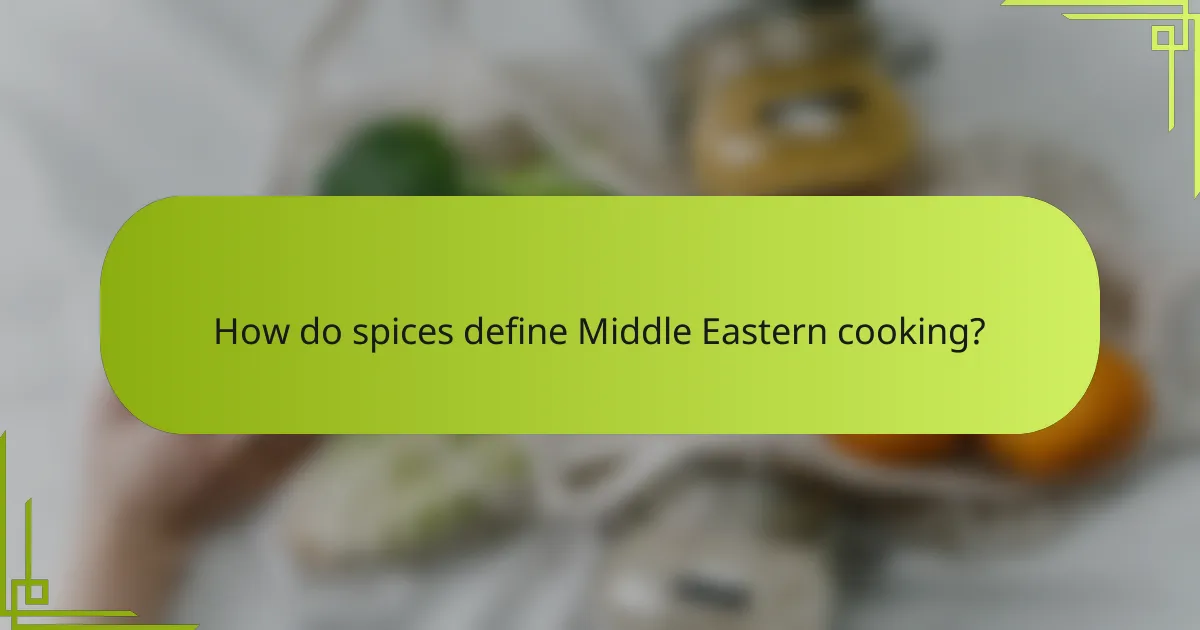
How do spices define Middle Eastern cooking?
Spices are fundamental to Middle Eastern cooking, providing depth, flavor, and character to dishes. They not only enhance taste but also reflect the region’s rich culinary traditions and cultural diversity.
Cumin
Cumin is a staple spice in Middle Eastern cuisine, known for its warm, earthy flavor. It is often used in spice blends and can be found in dishes like hummus, falafel, and various stews.
When cooking with cumin, consider toasting the seeds lightly to release their essential oils, which intensifies their flavor. A typical usage is about one to two teaspoons for a dish serving four to six people.
Coriander
Coriander seeds offer a citrusy, slightly sweet flavor that complements many Middle Eastern dishes. Ground coriander is commonly used in marinades, salads, and spice mixes.
For optimal freshness, use whole seeds and grind them just before use. A common guideline is to use one teaspoon of ground coriander for every cup of other ingredients in a recipe.
Sumac
Sumac is a tangy spice that adds a unique sour flavor to Middle Eastern dishes. It is often sprinkled on salads, grilled meats, and rice dishes to enhance their taste.
Using sumac is straightforward; a sprinkle can elevate a dish without overpowering it. It’s typically used in moderation, around half a teaspoon per serving, to achieve a balanced flavor.
Za’atar
Za’atar is a fragrant blend of herbs, often including thyme, oregano, and sesame seeds, with a distinct flavor profile. It is commonly used as a seasoning for meats, vegetables, and breads.
To use za’atar effectively, mix it with olive oil to create a marinade or dipping sauce. A tablespoon per serving is a good starting point for enhancing the flavor of various dishes.
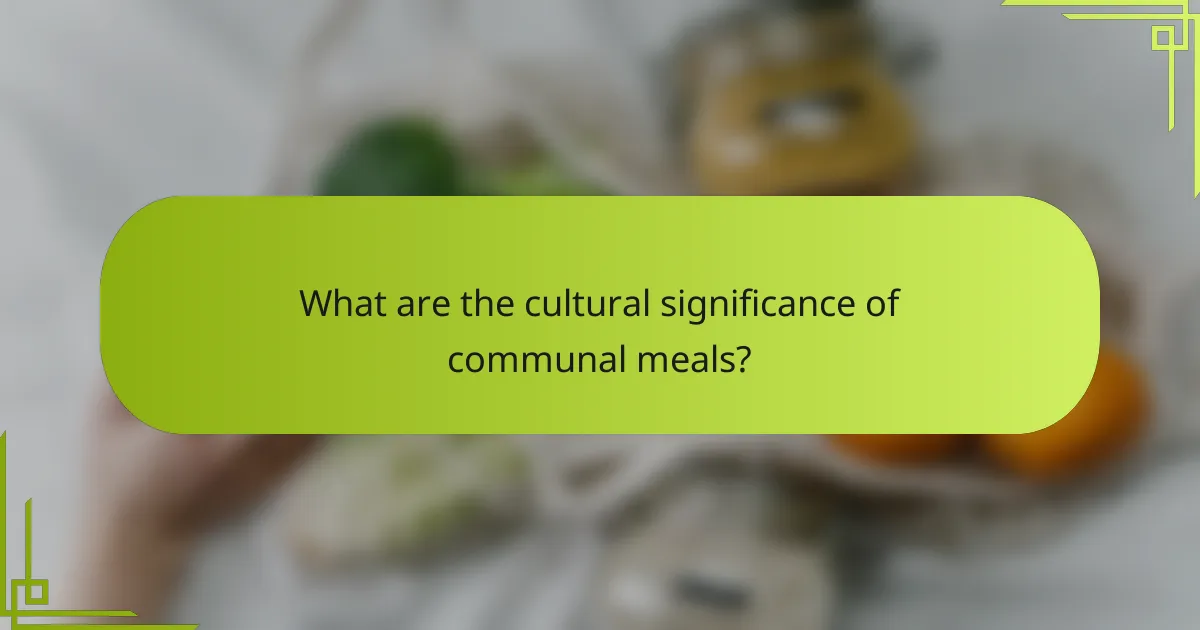
What are the cultural significance of communal meals?
Communal meals hold deep cultural significance in Middle Eastern societies, serving as a means to strengthen family bonds and foster community ties. These shared dining experiences emphasize togetherness, hospitality, and the celebration of traditions, making them central to social life.
Family gatherings
Family gatherings often revolve around communal meals, where relatives come together to share food and stories. These occasions can range from regular Sunday dinners to special events like weddings or anniversaries. Traditional dishes, often prepared in large quantities, encourage sharing and highlight the importance of familial connections.
During these meals, it is common to see dishes like biryani, kebabs, or stews served in large platters, allowing everyone to partake. The act of sharing food fosters a sense of belonging and unity among family members.
Festivals and celebrations
Festivals and celebrations in the Middle East are marked by communal meals that reflect cultural heritage and religious significance. Events such as Eid al-Fitr and Ramadan iftar feature large gatherings where families and friends come together to break bread and celebrate. These meals often include a variety of traditional dishes that symbolize abundance and gratitude.
During these occasions, it is customary to prepare special foods like sweet pastries or savory rice dishes, which are shared among guests. This practice not only honors tradition but also reinforces community bonds and collective joy.
Hospitality traditions
Hospitality is a cornerstone of Middle Eastern culture, and communal meals play a vital role in expressing this value. Guests are often welcomed with generous servings of food and drink, reflecting the host’s respect and appreciation. The act of sharing a meal is seen as a gesture of goodwill and friendship.
Common hospitality practices include serving dishes family-style, allowing guests to help themselves. It is considered polite to offer food multiple times, ensuring that everyone feels included and valued. This tradition highlights the importance of community and the joy of sharing meals together.
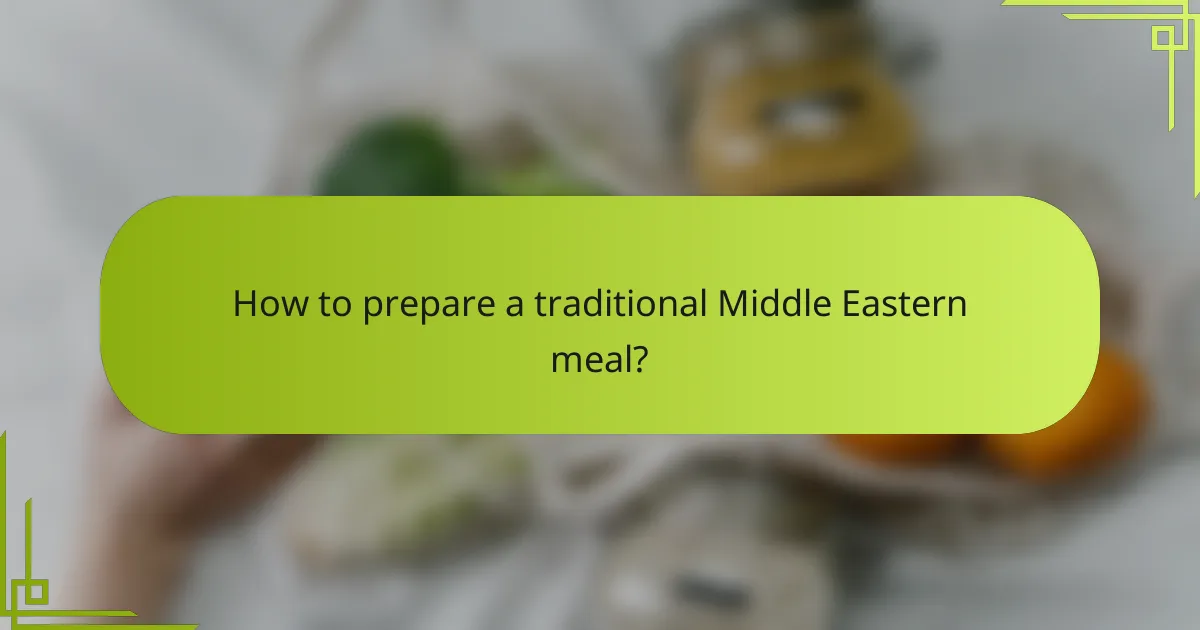
How to prepare a traditional Middle Eastern meal?
Preparing a traditional Middle Eastern meal involves selecting fresh ingredients, employing specific cooking techniques, and serving the food in a communal style. This culinary approach emphasizes bold flavors and shared experiences, making it a rich and enjoyable process.
Ingredients selection
Choosing the right ingredients is crucial for an authentic Middle Eastern meal. Fresh vegetables, herbs, and spices like cumin, coriander, and sumac are essential, along with staples such as rice, lentils, and various meats like lamb or chicken. Opt for high-quality, locally sourced items whenever possible to enhance flavor.
Consider incorporating seasonal produce to reflect the region’s agricultural diversity. For example, during summer, tomatoes, cucumbers, and eggplants are popular, while winter might bring root vegetables and citrus fruits into play.
Cooking techniques
Middle Eastern cooking often involves techniques such as grilling, roasting, and slow-cooking. Grilling meats over an open flame adds a distinct smoky flavor, while slow-cooking stews allows spices to meld beautifully. Techniques like sautéing onions and garlic in olive oil form the aromatic base for many dishes.
Utilizing a tagine or a pressure cooker can also enhance the cooking process, allowing for tender meats and rich flavors. Pay attention to cooking times; for instance, rice typically takes around 15-20 minutes to cook properly, while stews may require hours to develop depth.
Serving styles
Serving a Middle Eastern meal is often a communal affair, with dishes placed in the center for sharing. Use large platters for items like kebabs, rice, and salads, encouraging guests to help themselves. This style fosters connection and conversation among diners.
Accompany meals with traditional sides such as hummus, tabbouleh, and pita bread. These not only complement the main dishes but also enhance the communal experience. Consider using decorative serving ware to elevate the presentation, making the meal visually appealing as well as delicious.
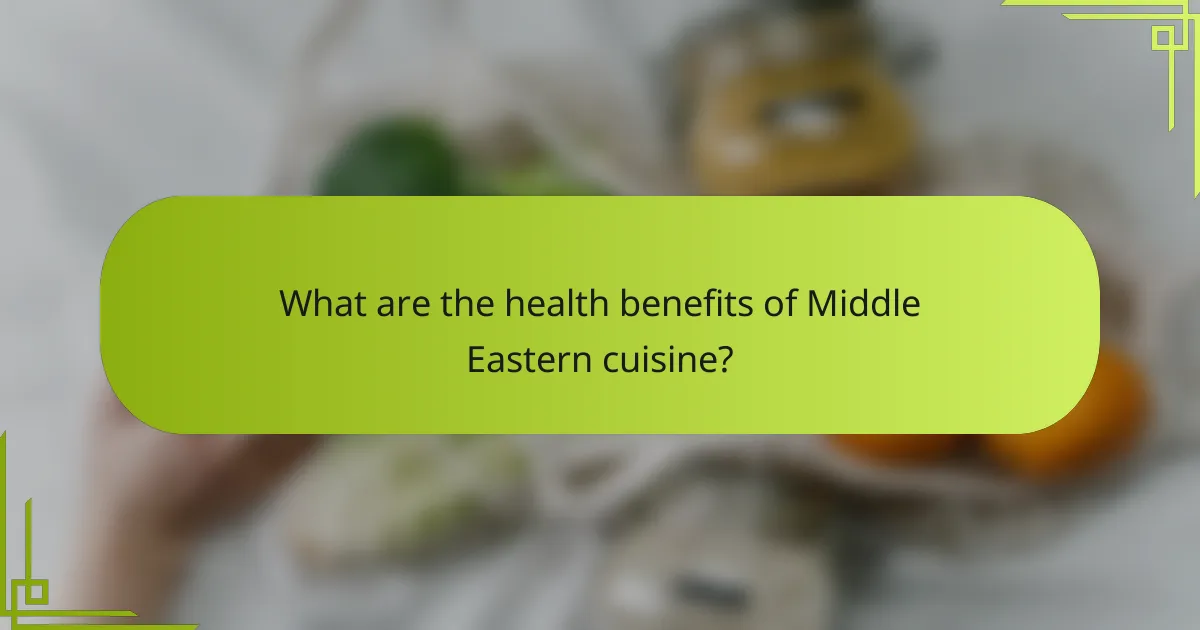
What are the health benefits of Middle Eastern cuisine?
Middle Eastern cuisine offers numerous health benefits, primarily due to its emphasis on fresh ingredients and bold flavors. The use of spices, vegetables, and healthy fats contributes to a balanced diet that can promote overall well-being.
Rich in vegetables
Middle Eastern dishes often feature a variety of vegetables, which are essential for a healthy diet. Common ingredients include tomatoes, cucumbers, eggplants, and bell peppers, providing essential vitamins and minerals.
Incorporating a wide range of vegetables can help reduce the risk of chronic diseases and improve digestion. Aim to fill half your plate with vegetables during meals to maximize these health benefits.
Healthy fats
Healthy fats are a staple in Middle Eastern cuisine, primarily sourced from olive oil, nuts, and seeds. These fats are beneficial for heart health and can help lower bad cholesterol levels.
Using olive oil as a dressing or cooking medium can enhance flavor while providing monounsaturated fats. Including a handful of nuts or seeds in your meals can also contribute to a balanced intake of healthy fats.
High in fiber
Many Middle Eastern dishes are rich in fiber, thanks to ingredients like legumes, whole grains, and vegetables. Fiber is crucial for digestive health and can help maintain stable blood sugar levels.
Incorporating foods such as lentils, chickpeas, and whole grain pita into your diet can significantly increase your fiber intake. Aim for at least 25-30 grams of fiber daily to support overall health.






